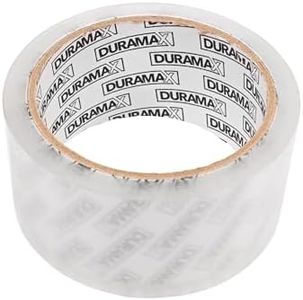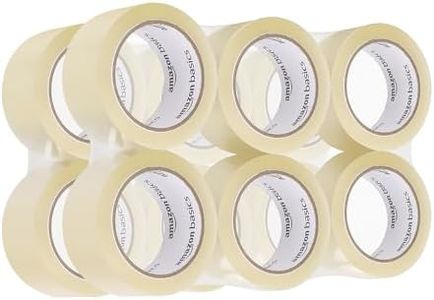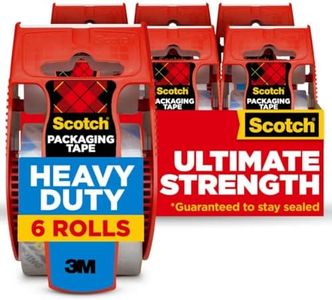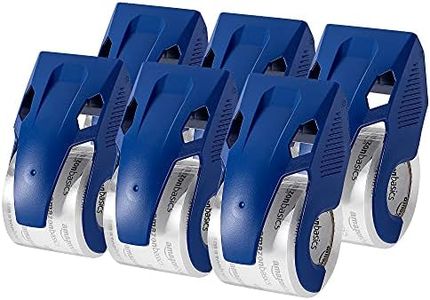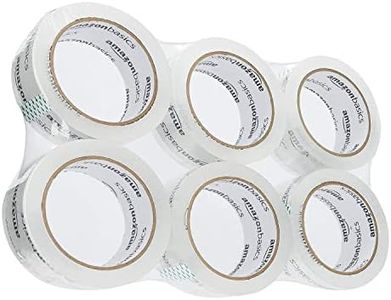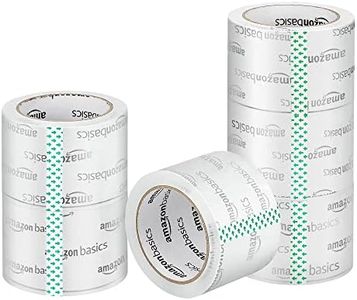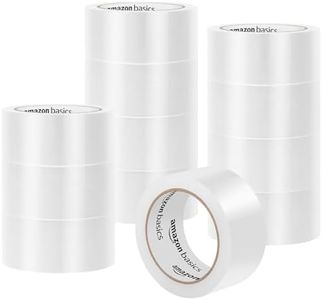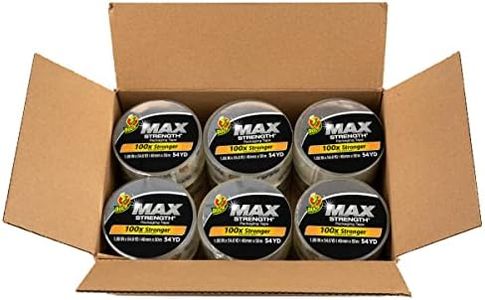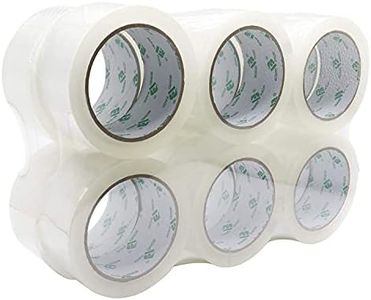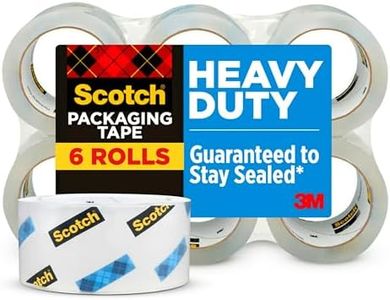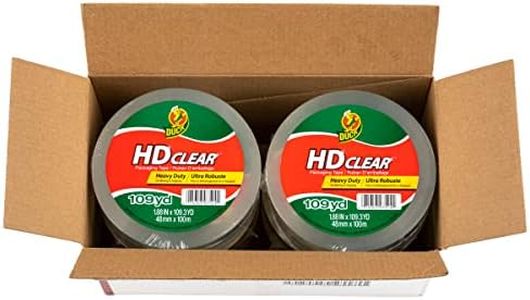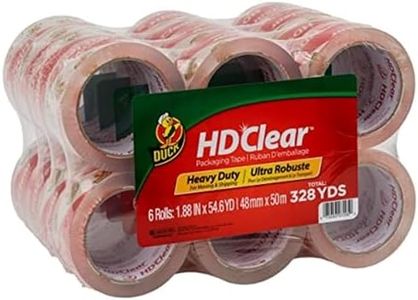We Use CookiesWe use cookies to enhance the security, performance,
functionality and for analytical and promotional activities. By continuing to browse this site you
are agreeing to our privacy policy
10 Best Packing Tapes
From leading brands and best sellers available on the web.By clicking on a link to a third party's website, log data is shared with that third party.
Buying Guide for the Best Packing Tapes
Choosing the right packing tape can make tasks like moving, shipping parcels, or organizing your home much easier and more secure. The best tape for you depends on what you’re packing and how much stress the tape will need to handle. Think about the surfaces you are taping, the weight of the boxes or parcels, and how long you expect the tape to hold things together. By understanding the main attributes of packing tape, you can confidently pick tape that matches your needs and avoids frustration like broken seals or sticky residue.Adhesive TypeThe adhesive is the sticky material that helps the tape bond to surfaces. There are mainly two types: acrylic and hot melt. Acrylic adhesives resist temperature and UV light, great for long-term storage or in varying environments, while hot melt adhesives stick quickly and strongly, making them ideal for heavy or high-volume applications. For standard home or office use, either can be suitable, but for longer storage or shipping in extreme climates, acrylic is usually better. Consider where your boxes will be stored or shipped, and pick the adhesive type that best matches those conditions.
Tape Strength (Tensile Strength)Tape strength refers to how much force it can take before it breaks. It's usually measured in pounds per inch (lbs/in). Light-duty tape is fine for small, light boxes or envelopes, while medium-duty is good for most moving or shipping needs. Heavy-duty tape is required for heavy, overstuffed boxes or valuable items. Match the tape strength to the weight and size of your packages to ensure your items stay secure in transit or storage.
Width of TapeThe tape width determines how much area each strip of tape covers. Common widths are around 2 inches, but there are narrower and wider options. Narrow tape might be sufficient for sealing small boxes, but wider tape gives better coverage and support for bigger or heavier packages, reducing the risk of the seal breaking. Choose based on the size of the boxes you pack most often—go wider for larger or heavier boxes, and narrower for light packs or small parcels.
Thickness (Mil or Microns)Tape thickness is generally measured in 'mil' (thousandths of an inch) or microns. Thinner tapes are more flexible and work fine for light, everyday use, but can be more prone to tearing under stress. Thicker tapes are stronger and more reliable for heavy-duty packing. If you’re sealing boxes for moving, shipping, or storage, choose a thicker tape for extra peace of mind; for quick tasks or lightweight envelopes, thinner tape can be enough.
Clarity and FinishPacking tapes come in clear or tan/brown colors, and sometimes offer a matte or glossy finish. Clear tape has a polished look and is good for printed or decorative boxes, as it won’t obscure labels. Tan tape is often used for traditional cardboard boxes and can provide an extra bit of security by making tampering more obvious. If presentation is important, opt for clear tape; if you want standard, straightforward sealing, color and finish are not as crucial.
